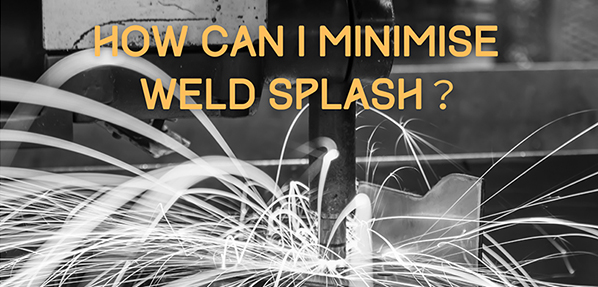HOW CAN I MINIMISE WELD SPLASH?

Minimizing weld splash in resistance spot welding is crucial for ensuring both the quality of the weld and the safety of the welding process. Weld splash can lead to defects, inconsistent welds, and safety hazards. Here are some strategies to help minimize weld splash in resistance spot welding:
Optimize Welding Parameters:
Adjust the welding parameters, including current, voltage, and welding time, to optimal levels for the specific materials being welded. Proper parameter settings contribute to a stable and controlled welding process, reducing the likelihood of splatter.
Maintain Proper Electrode Alignment:
Ensure that the electrodes are aligned correctly and are in good condition. Misalignment or worn-out electrodes can lead to uneven pressure on the workpieces, causing splatter.
Use the Right Electrode Material and Design:
Choose electrode materials that are suitable for the specific application. Electrode materials with good thermal conductivity and durability can contribute to a more stable welding process. Additionally, consider the design of the electrodes to ensure proper contact and pressure distribution.
Control Surface Contamination:
Clean the workpieces thoroughly before welding to minimize surface contaminants. Contaminants on the metal surfaces can contribute to spattering during the welding process.
Implement Anti-Spatter Coatings:
Apply anti-spatter coatings or release agents to the electrode surfaces. These coatings can help prevent the adhesion of molten metal to the electrodes, reducing the likelihood of splatter.
Optimize Material Thickness:
Choose appropriate material thickness for spot welding. Welding thin materials may require different parameters than thicker materials. Adjusting the welding parameters based on material thickness can help minimize splatter.
Implement Water-Cooling Systems:
Consider using water-cooled electrodes to manage heat buildup during the welding process. Controlling the temperature of the electrodes can contribute to a more stable welding environment, reducing the likelihood of splatter.
Regular Maintenance:
Perform regular maintenance on welding equipment, including cleaning and inspecting electrodes, to ensure they are in optimal condition. Replace worn-out or damaged components promptly.
Training and Skill Development:
Provide proper training for operators to ensure they have the skills and knowledge to operate the spot welding equipment effectively. Skilled operators are better equipped to control the welding process and minimize splatter.
By combining these strategies, you can improve the quality and safety of resistance spot welding while minimizing weld splash. It's essential to experiment and fine-tune the parameters based on the specific materials and conditions of your welding application.


